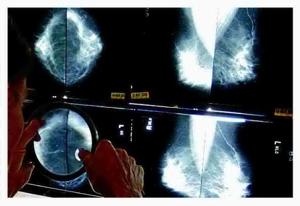Breast cancer remains a significant health concern, ranking as the second leading cause of cancer-related deaths among women worldwide. Early detection through regular mammograms can dramatically improve the odds of successful treatment, according to the American Cancer Society. This proactive approach is crucial, as studies indicate that approximately 1 in 8 women will be diagnosed with breast cancer during their lifetime.
Factors such as age, family history, and genetics contribute to the risk of developing breast cancer. Health organizations recommend that women begin screening at the age of 40, although some may need to start earlier based on their personal risk factors. This recommendation aligns with guidelines from the World Health Organization, which emphasizes the importance of early detection in reducing mortality rates.
Global Impact of Mammogram Screening
Research highlights the effectiveness of mammography in identifying breast cancer at its earliest stages. In regions where regular screening is implemented, survival rates have significantly improved. For instance, in the United States, the five-year survival rate for localized breast cancer exceeds 99%, underscoring the importance of early diagnosis.
Countries like Canada and Australia have also adopted similar screening programs. In Canada, the Canadian Task Force on Preventive Health Care recommends screening for women aged 50 to 74 every two to three years. These guidelines aim to balance the benefits of early detection with the potential risks associated with over-diagnosis and unnecessary treatment.
Challenges and Opportunities in Screening
Despite the proven benefits, barriers to accessing mammograms still exist. In rural areas, for instance, women may face logistical challenges due to the distance to healthcare facilities. Cultural attitudes and misconceptions about breast cancer can also hinder women from seeking regular screenings.
To address these issues, various health organizations are working to enhance awareness and accessibility. Community outreach programs aim to educate women about the importance of mammograms and provide resources to facilitate access to screening services.
Strong public health campaigns have proven effective in motivating women to prioritize their health. For example, campaigns in the United Kingdom have led to increased participation in screening programs, showcasing the potential for positive change when information is effectively communicated.
In conclusion, regular mammograms play a pivotal role in the early detection of breast cancer, significantly increasing the chances of successful treatment. As health authorities continue to promote screening and remove barriers to access, the global fight against breast cancer moves forward, with the hope of reducing mortality rates and improving the quality of life for women everywhere.







